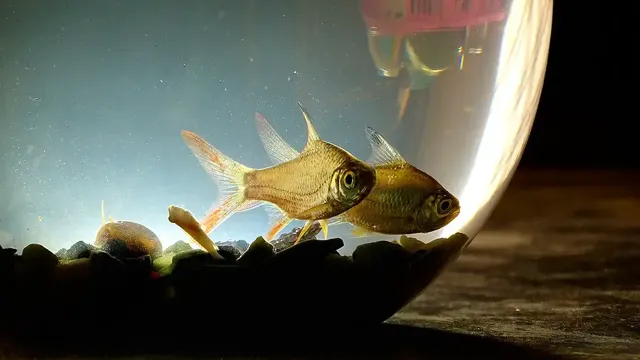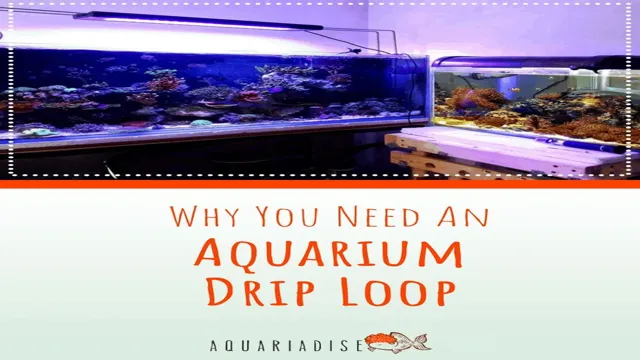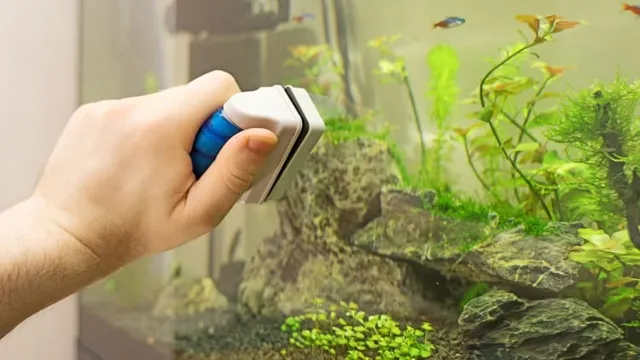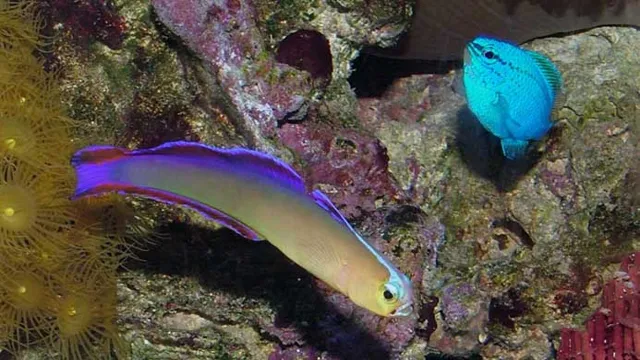As an aquarium owner, you are probably familiar with the importance of providing your fish with the right kind of food. However, have you ever wondered how quickly fish food can go bad in aquariums? When it comes to feeding your aquatic pets, freshness is key. Fish food that has gone bad can not only lose its nutrient value, but it can also lead to health problems for your fish.
In this blog post, we will explore the shelf life of fish food and how to properly store it to keep it fresh for your beloved underwater friends. So let’s dive in and explore what can happen when you overlook the importance of proper storage of fish food.
Factors That Affect Fish Food Shelf Life
How quickly fish food goes bad in an aquarium can vary based on several factors. Firstly, the type of food can affect its shelf life. Flake and pellet foods tend to have a longer shelf life than frozen or live foods, which can spoil quickly.
Secondly, the storage conditions, such as temperature and humidity, play a role in how long the food stays fresh. Extreme temperatures or moisture can cause the food to spoil faster. Thirdly, the size of your tank and the number of fish you have can also impact the shelf life of the food.
Overfeeding can cause uneaten food to accumulate, leading to water quality issues and faster food spoilage. As a rule of thumb, it is best to only buy enough food to last 2-3 months and store it in a cool, dry place to maximize freshness. Paying attention to these factors can help ensure that your fish get the nutrients they need from their food and reduce the risk of health issues in the aquarium.
Ingredients
When it comes to fish food, the factors that affect its shelf life are important to consider to make sure your aquatic companions are getting the freshest and healthiest nutrition possible. One major ingredient that plays a role in shelf life is the fat content in the fish food. Higher fat content can cause the food to go rancid faster, shortening its shelf life.
Additionally, the amount of moisture in the food can also affect how long it will last. Moisture can lead to mold and bacteria growth, which can spoil the food. That’s why it’s crucial to store fish food in a dry and cool place, away from direct sunlight, to extend its shelf life.
Other factors that can impact shelf life include the type of packaging used and how regularly the food is opened and closed. Overall, understanding these factors can help ensure that your fish’s food is fresh, nutritious, and safe for consumption.
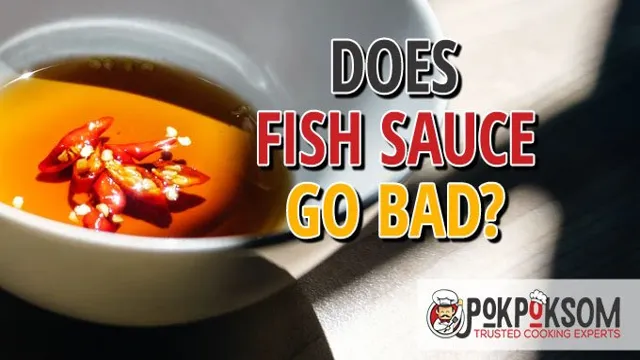
Packaging
Packaging is a crucial factor that affects the shelf life of fish food. The type of packaging material and the way it is sealed have a direct impact on the freshness of the fish food. Oxygen and moisture are the main culprits that cause fish food to spoil.
Therefore, the packaging material should be able to protect the contents from these elements. Vacuum-sealed packaging is an effective technique to increase the shelf life of fish food as it removes the air inside the package, which slows down the oxidation process. Additionally, high-quality packaging materials, such as multilayer films, are essential as they provide a barrier against moisture and oxygen.
Hence, when selecting fish food, it is essential to consider the type of packaging material used and the way it is sealed, as it can affect the freshness and shelf life of the product. (See Also: How to Grow a Sweet Potato in an Aquarium: A Step-by-Step Guide for Healthy Plants)
Signs of Spoiled Fish Food
As a fish owner, one of the most crucial aspects of keeping your pet healthy is providing them with adequate nutrition. However, how quickly does fish food go bad in aquariums, and what are the signs of spoiled fish food? In general, fish food can last for up to a year if properly stored in a cool, dark location away from heat and moisture. However, once the food is introduced to the aquarium’s water, it can spoil much faster.
One telltale sign of spoiled fish food is a foul odor. If your fish food begins to smell rancid or sour, it’s a clear indication that it’s no longer safe for your fish to eat. Another sign to watch out for is color changes.
If the food’s color appears to be fading or darkening, it’s best to toss it out and replace it with fresh food. Taking these steps ensures that your fish receive adequate, healthy nutrition and remain happy and healthy for the long term.
Color
If you’re an aquarium hobbyist, it’s crucial to keep your fish fed with fresh and nutritious food. However, as with any type of food, fish food can spoil over time, leading to potential health problems for your aquatic pets. One of the signs that your fish food has gone bad is a change in color.
Fresh fish food should be brightly colored and vibrant, but if the color has faded or turned brown, then it’s likely that it’s no longer suitable for your fish to consume. Additionally, if you notice any mold or a rancid smell coming from the food, then it’s best to dispose of it immediately and purchase a new batch to ensure the health and happiness of your beloved underwater companions. By keeping an eye on the color and smell of your fish food, you can help prevent any potential health problems for your fish and maintain a healthy and thriving aquatic environment.
Smell
One of the easiest ways to tell if fish food has gone bad is by its smell. Spoiled fish food has a distinct sour smell that is difficult to miss. If you notice a foul odor coming from your fish food, it’s time to throw it away.
Another sign of spoiled fish food is its color. If the pellets or flakes are discolored or have dark spots on them, it’s best to err on the side of caution and discard the food. Additionally, if you see any signs of mold or fungus growing on the food, it’s definitely time to get rid of it.
Feeding your fish spoiled food can lead to illness or even death, so it’s important to be diligent about checking food for these signs of spoilage. Remember, fresh, high-quality fish food keeps your pets healthy and happy, so it’s worth investing in the best options available.
Texture
Texture, spoiled fish food, signs One of the indicators of spoiled fish food is its texture. If you notice any clumping or caking in the food, it’s a sign that the food has been exposed to moisture. The moisture causes the food to stick together and eventually form clumps that become a breeding ground for bacteria and mold.
Also, if you notice any discolouration, it means the food has lost its nutritional value, and it’s better to throw it away. Finally, check for any foul smell coming from the food, which is a clear sign of spoiling. If you observe any of these signs in your fish food, remove it from the tank to avoid contaminating the tank water, which could cause harm to your fish.
Remember, it is always best to inspect the food before feeding in order to avoid any potential health hazards for your fish. (See Also: How to Get Rid of Algae on Plants in Aquarium: Top Tips and Tricks)
How to Store Fish Food
Have you ever wondered how quickly fish food goes bad in your aquarium? The answer is that it varies depending on the type of food and how it’s stored. Dry fish food can last for a few months to a year if stored in an airtight container in a cool and dry place, away from sunlight and moisture. On the other hand, frozen or live fish food has a shelf life of a few weeks to a couple of months at most.
It’s crucial to store these types of food in the freezer immediately after purchase to prevent spoilage and preserve their nutritional value. Remember, fish food can spoil quickly, so it’s best to buy in small amounts and only what you need. Also, be aware of any expiration dates on the packaging, and if in doubt, it’s better to throw the food away than risk feeding your fish something that could harm them.
Location
Fish food storage is crucial to ensure the quality and freshness of the food for your aquatic pets. One of the most important aspects of storing fish food is the location. You should always store your fish food in a cool, dry place away from direct sunlight and any sources of heat.
This will prevent the food from spoiling or becoming stale. It’s also a good idea to keep the food in airtight containers to prevent exposure to moisture or air, which can cause the food to degrade and lose valuable nutrients. Additionally, make sure to label your containers with the type of food and expiration date to avoid confusion and ensure you’re feeding your fish with fresh, nutritious food every time.
By taking these simple steps, you can extend the shelf life of your fish food and provide your pets with the best possible nutrition.
Container
As a fish owner, you want to ensure that your pets are well-fed, healthy and happy. One of the essential aspects of maintaining their health is proper storage of their food. Fish food comes in various forms and types, including flakes, pellets, and frozen food.
You want to make sure that the container you use to store their food is clean and dry. Get a container with an airtight lid to keep the food fresh and prevent moisture, mold, and pests from getting into it. Ensure that the container is big enough to store the amount of food you have and big enough to reach in and scoop out the food easily.
Also, avoid storing the food in direct sunlight as this can affect its quality. By taking the time to store your fish food correctly, you will ensure that your fish remain healthy and happy.
Conclusion
All in all, it’s safe to say that fish food is like a ticking time bomb in your aquarium. If you leave it there for too long, it will go bad faster than a speeding bullet. So, remember to keep a close eye on those expiration dates and store your fish food properly to ensure your aquatic companions stay healthy and happy for a long time.
“ (See Also: How to Bring Acid Down in an Aquarium: Effective Tips and Techniques)
FAQs
How long can fish food be stored before it goes bad?
The shelf life of fish food varies depending on the brand and type, but on average it can be stored for 6 months to a year before it starts to go bad.
What are some signs that fish food has gone bad?
If the fish food has a rancid or foul odor, has changed color, or has become moldy or slimy, it has likely gone bad and should be discarded.
How can I ensure that my fish food stays fresh?
To keep fish food fresh, store it in a cool, dry place away from sunlight and moisture. Use an airtight container to prevent air from getting in and causing the food to spoil.
Can feeding my fish old food harm them?
Yes, feeding your fish old or spoiled food can harm their health and even lead to illness. Always check the expiration date and condition of the food before feeding it to your fish.
How often should I check my fish food for freshness?
It’s a good idea to check your fish food regularly, at least once a month, to ensure it hasn’t gone bad. This will prevent you from accidentally feeding your fish old or spoiled food.
What is the best way to dispose of old fish food?
For safety reasons, it’s best to dispose of old fish food in the trash rather than flushing it down the toilet or dumping it in a body of water. Be sure to seal it in a plastic bag before throwing it away.
What are some alternatives to traditional fish food that won’t spoil as quickly?
Some alternatives to traditional fish food include live or frozen foods such as brine shrimp, bloodworms, or krill. These options have a shorter shelf life, but can be more nutritious and appealing to your fish.

